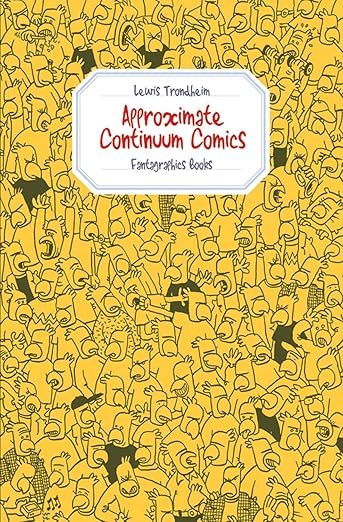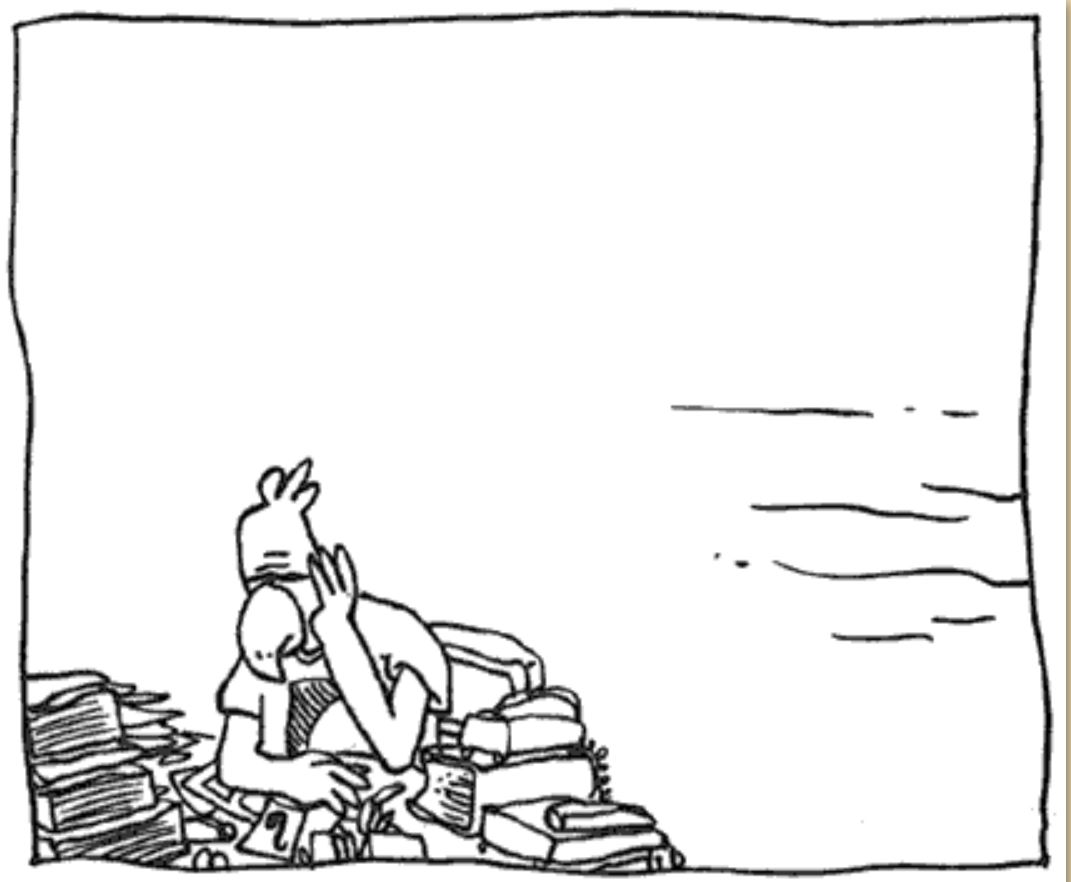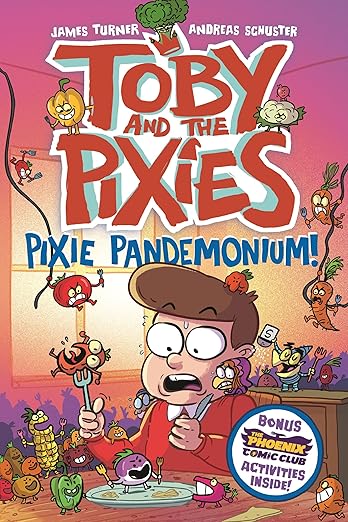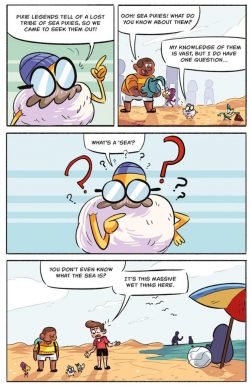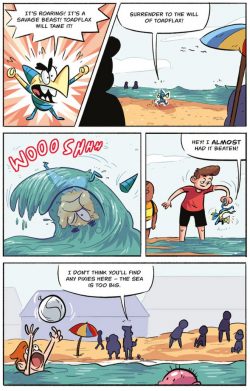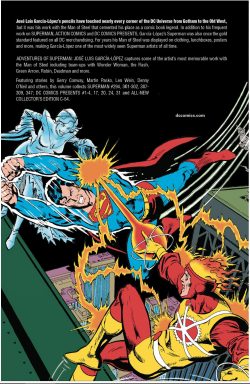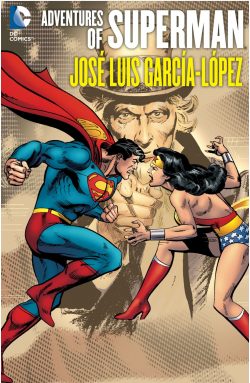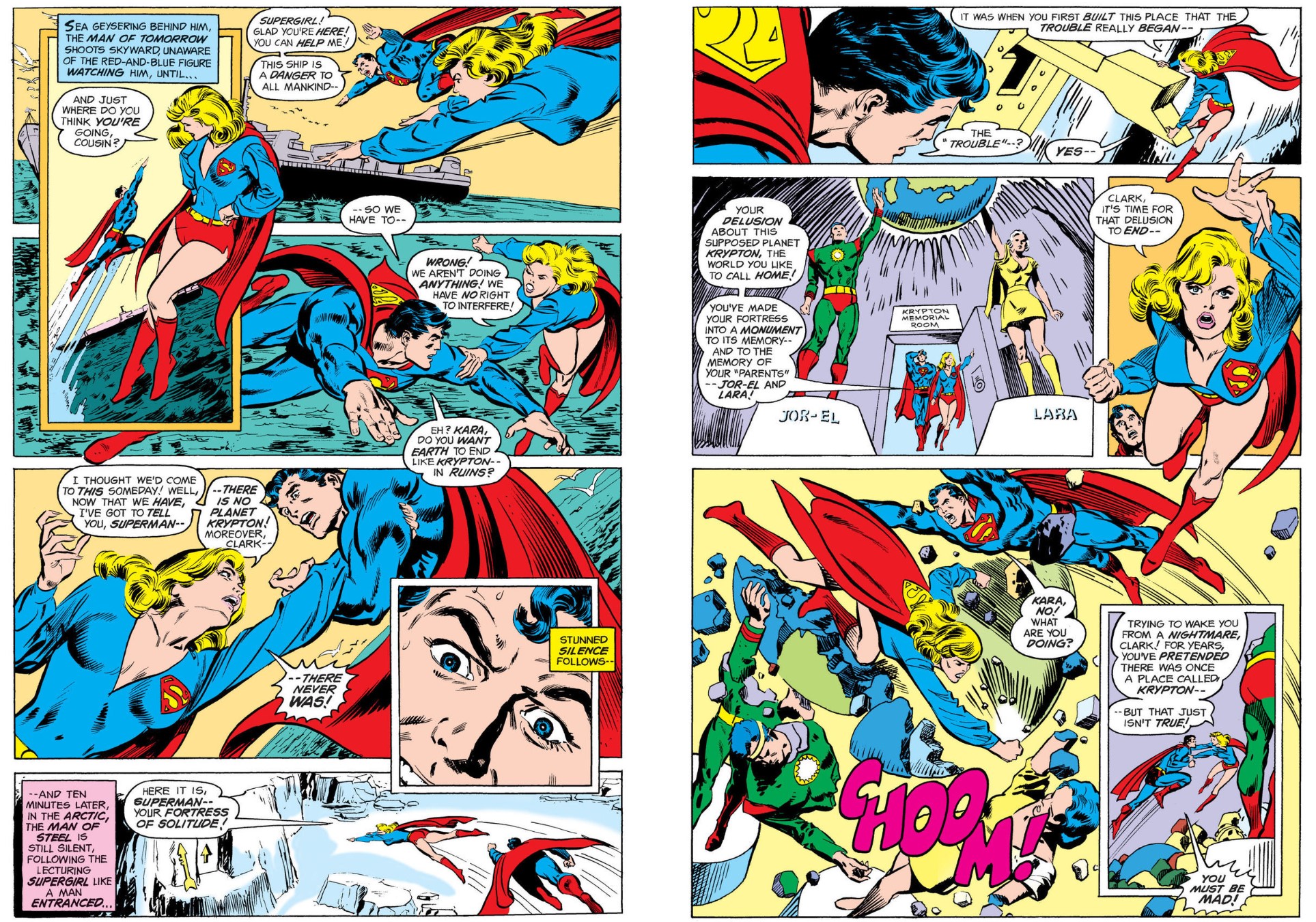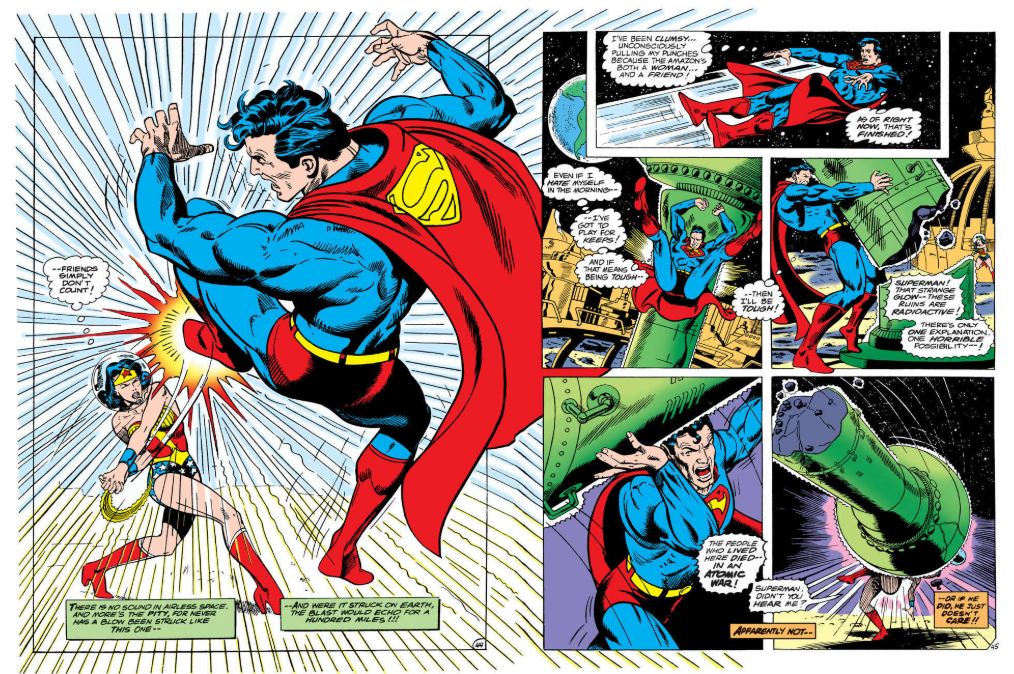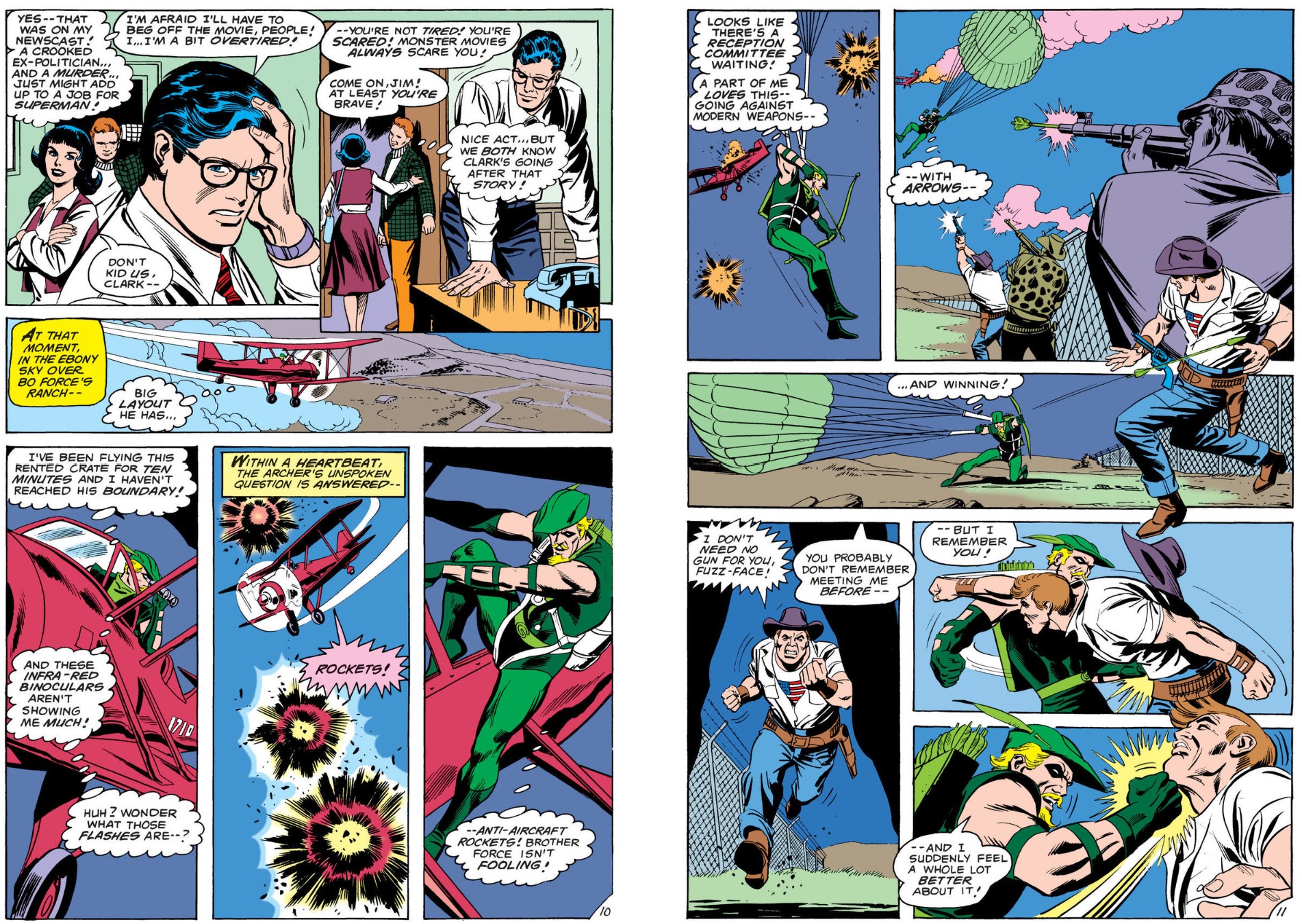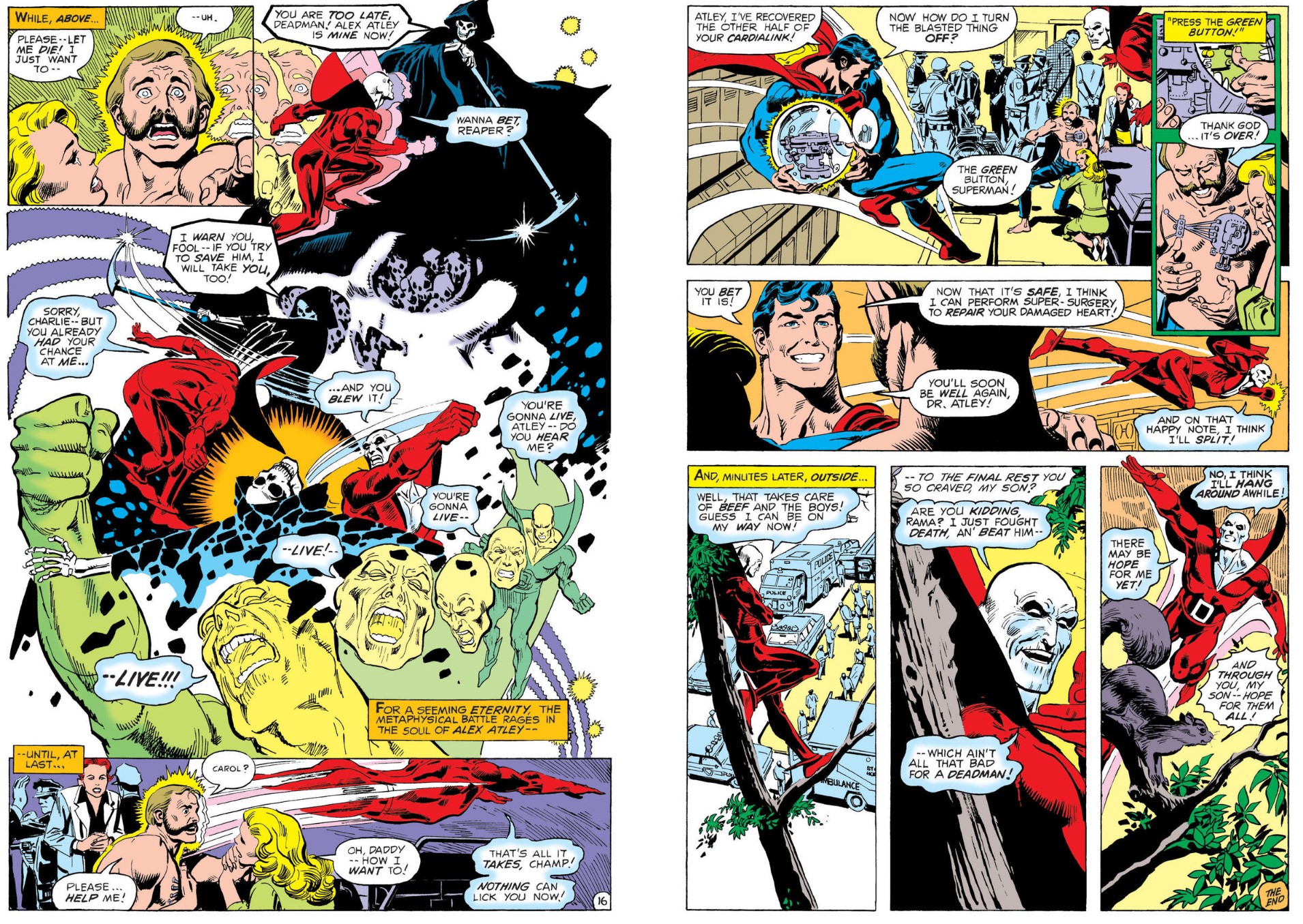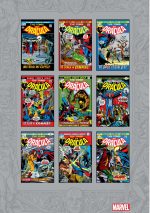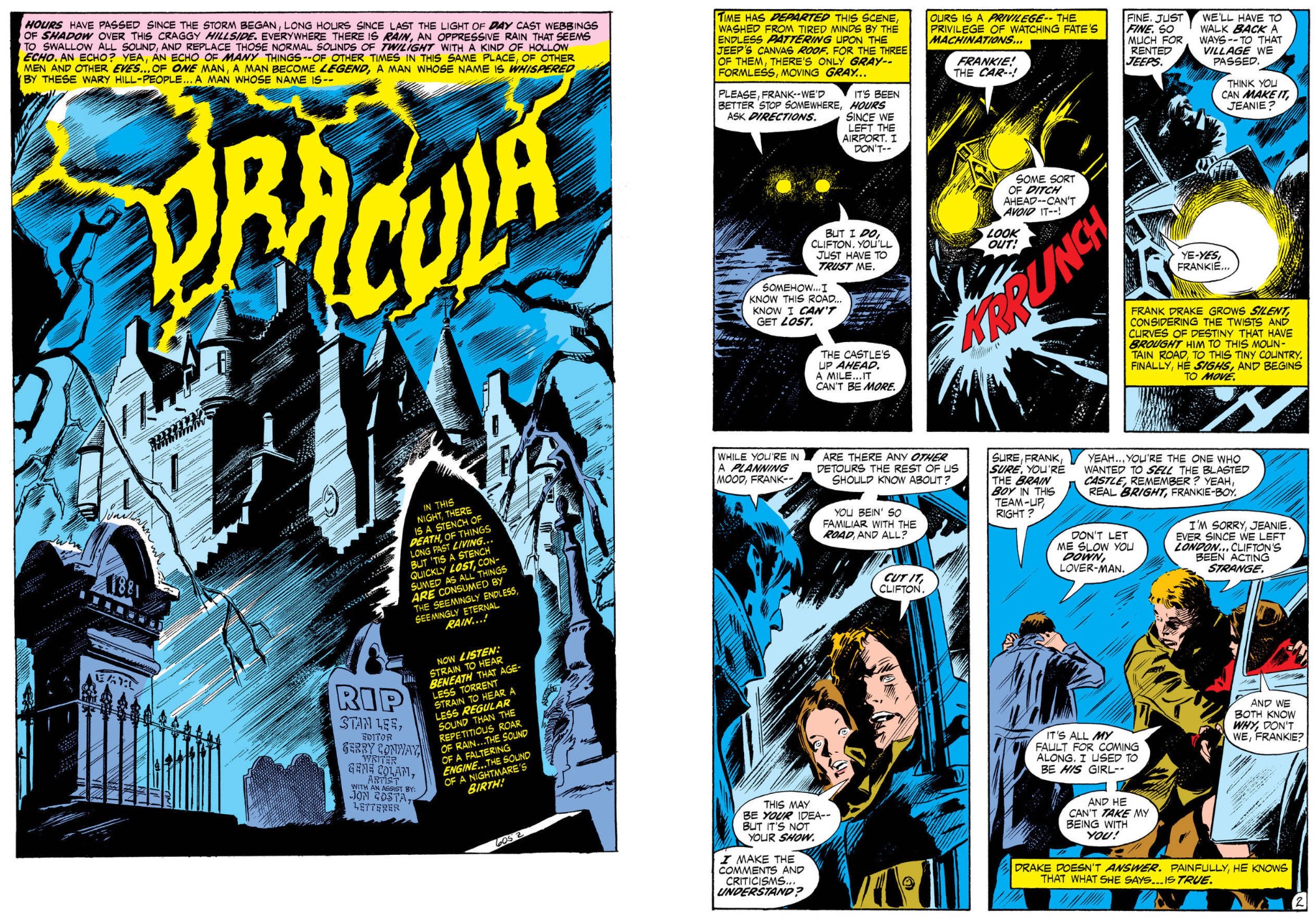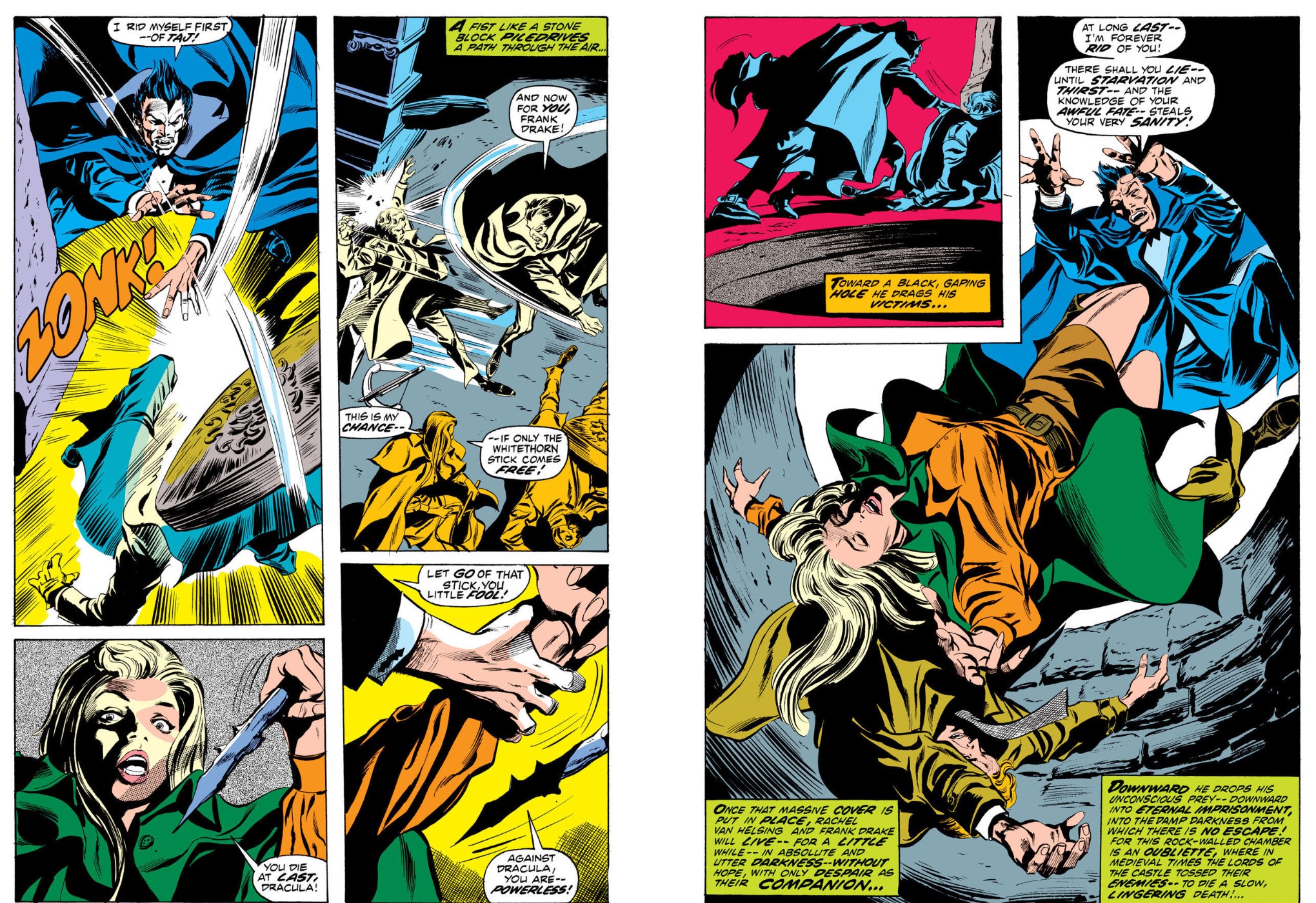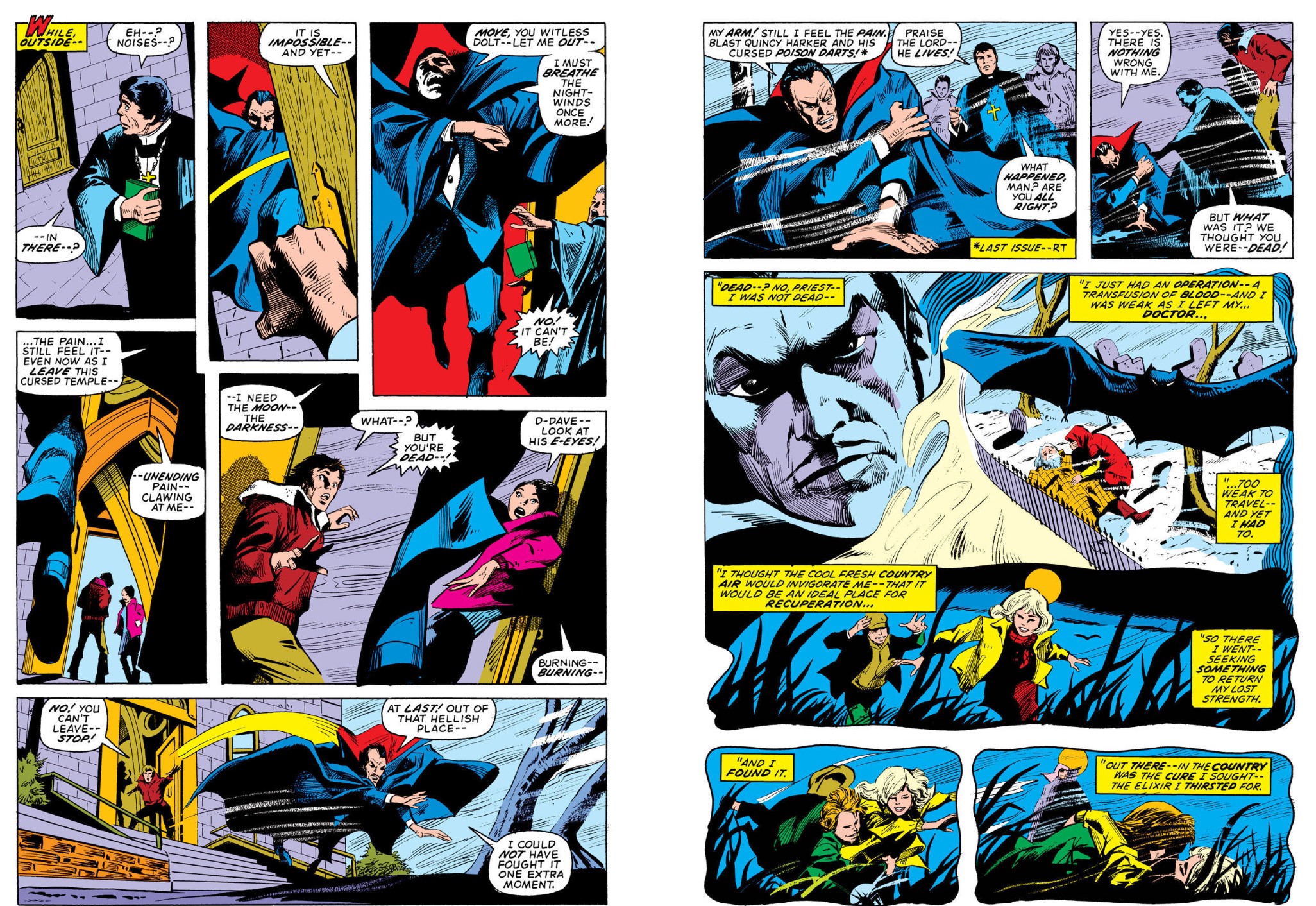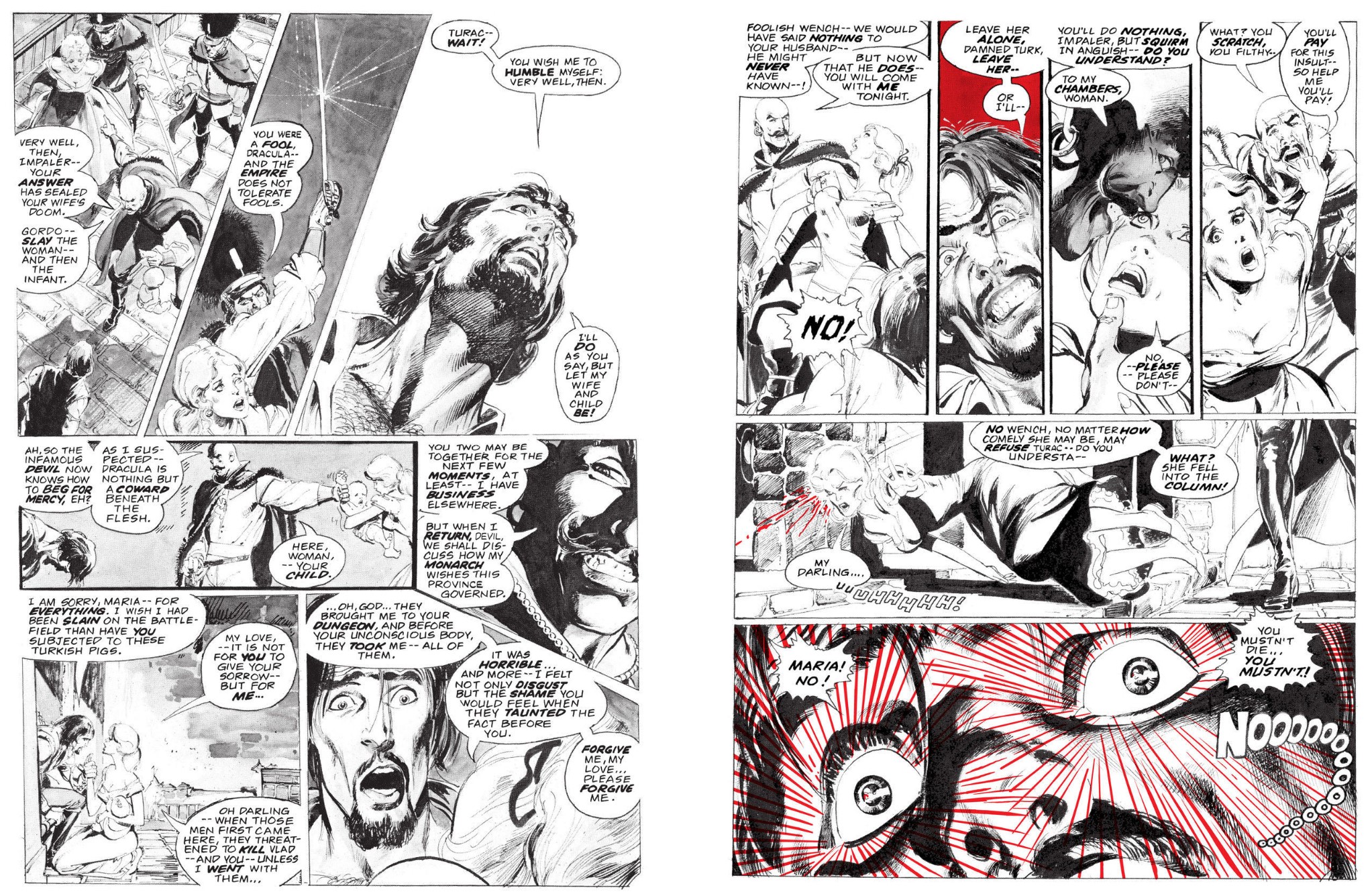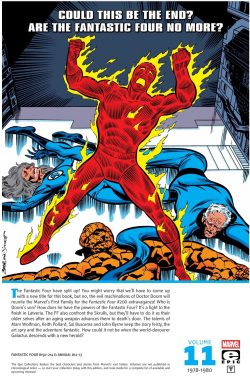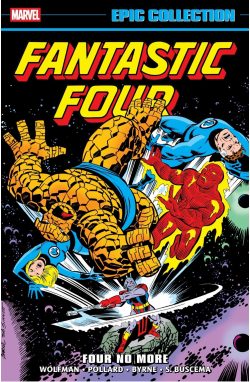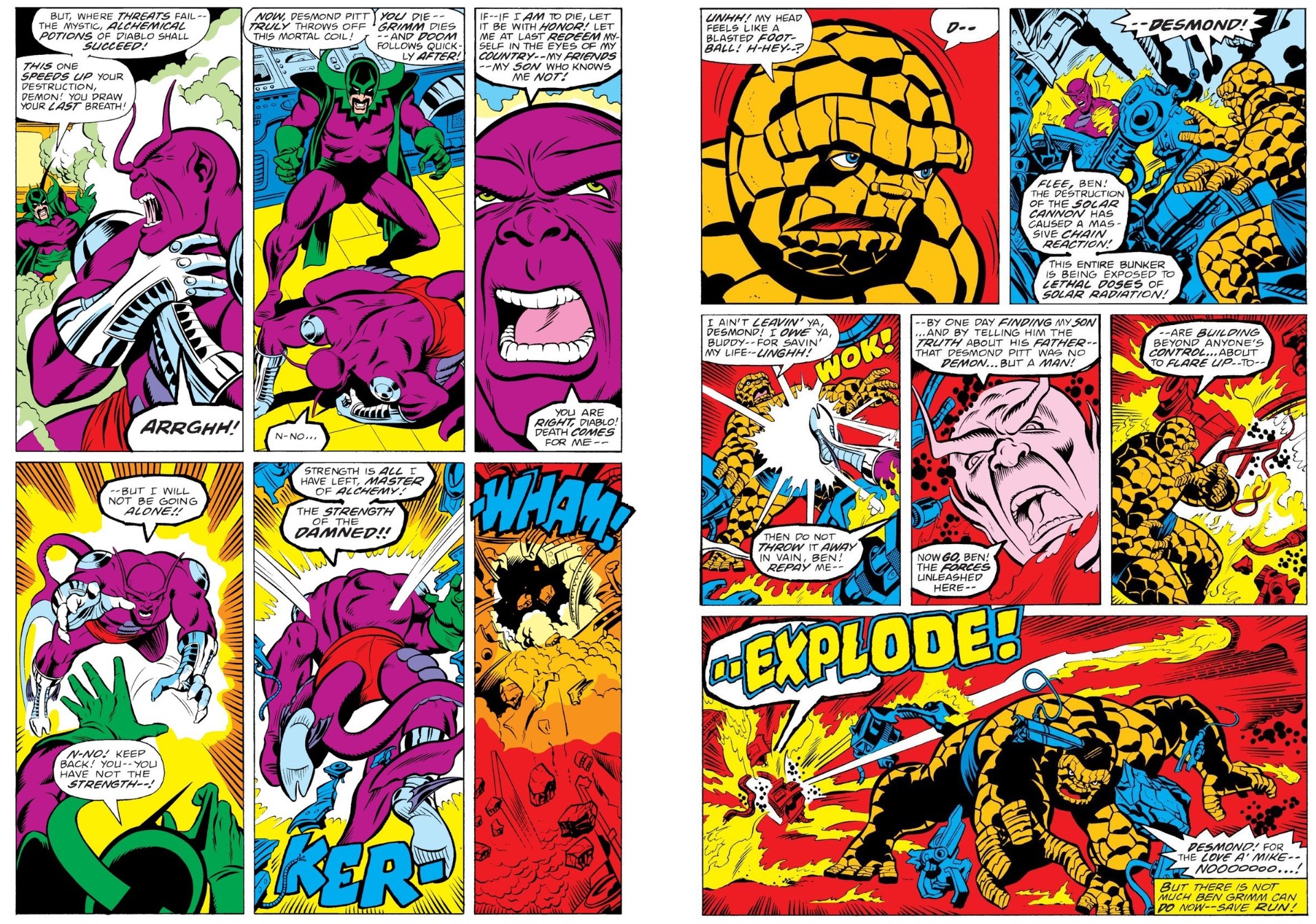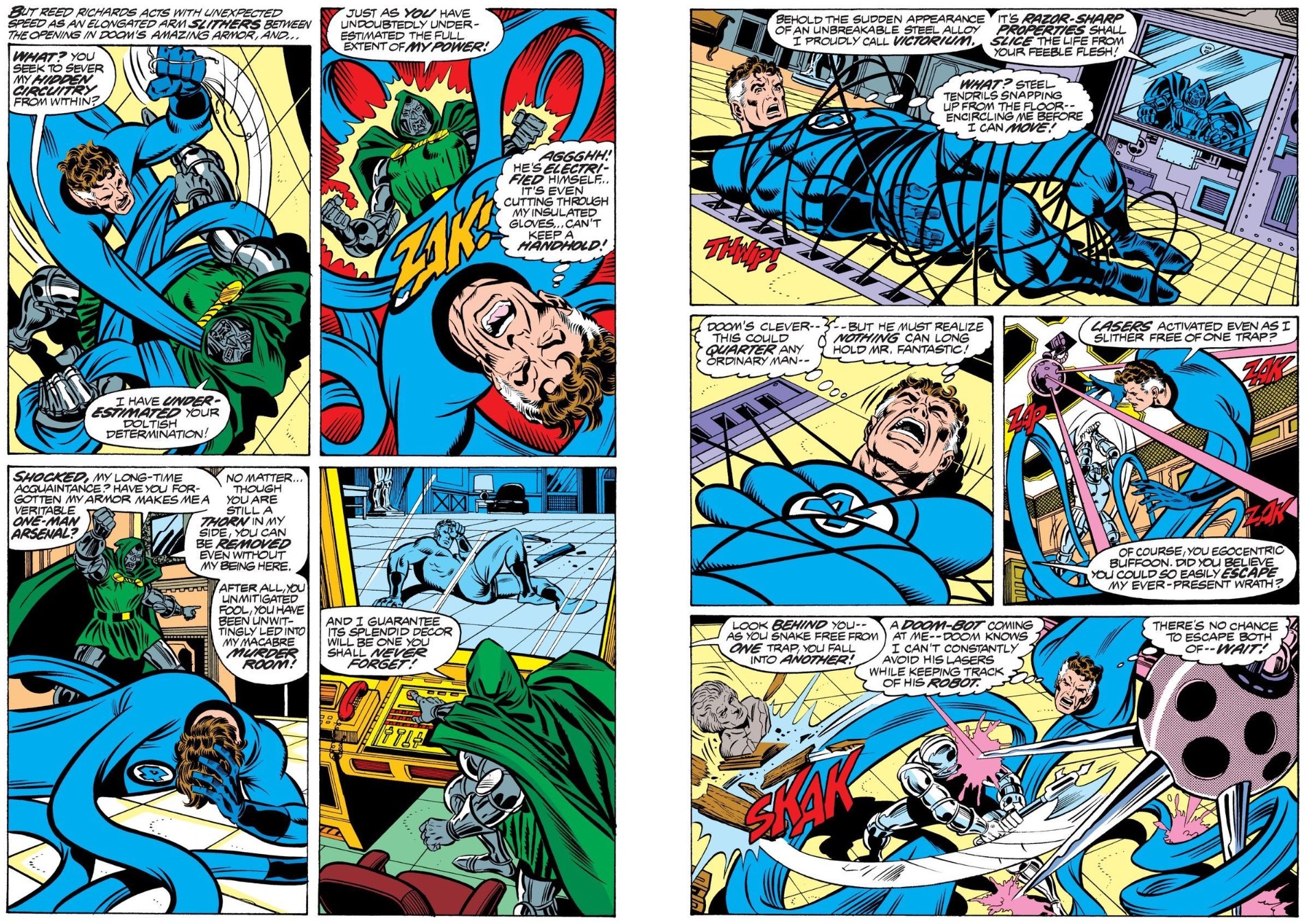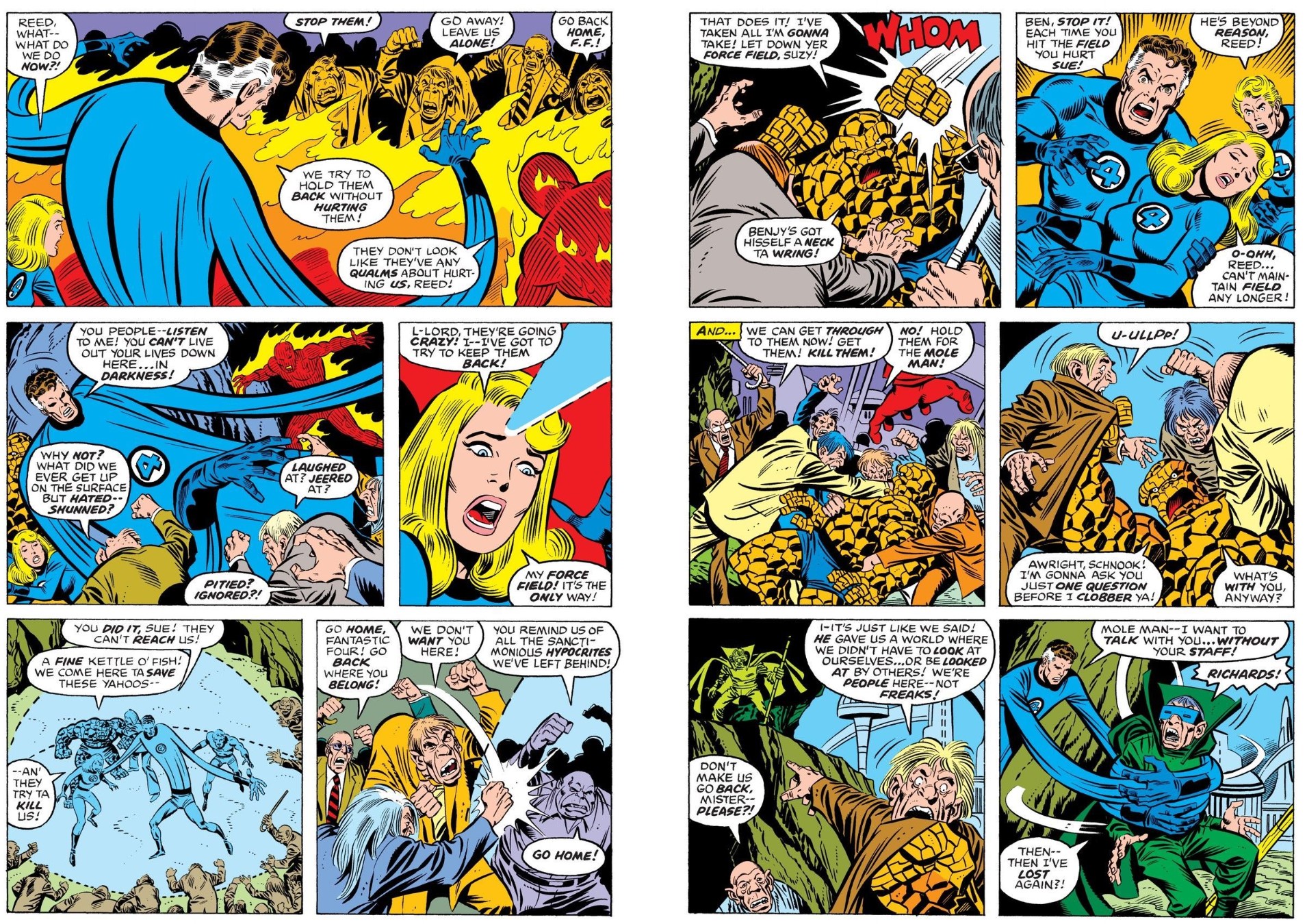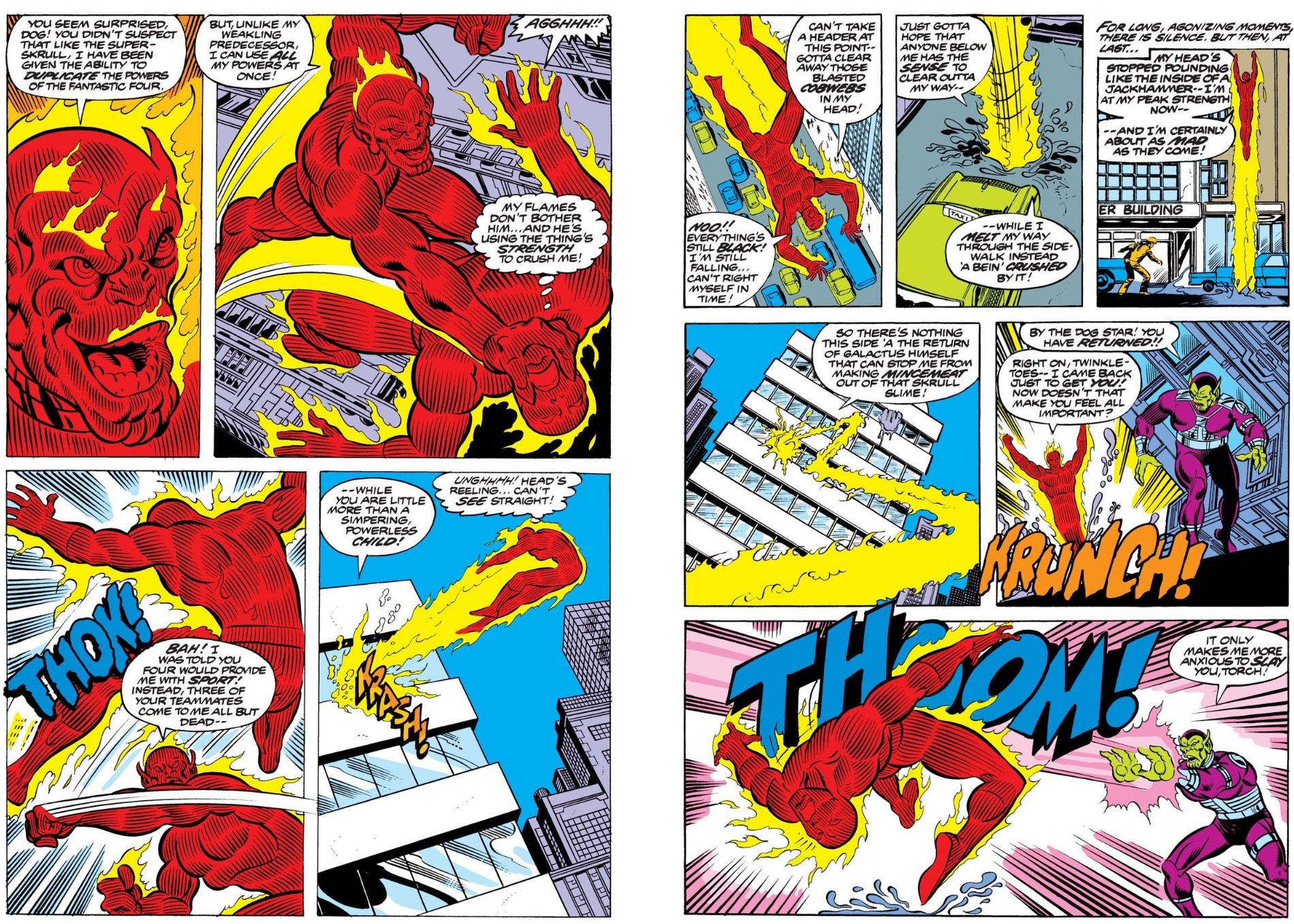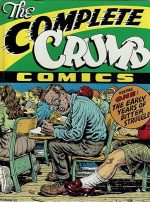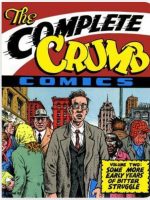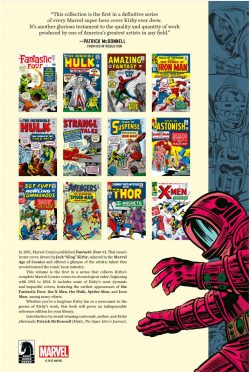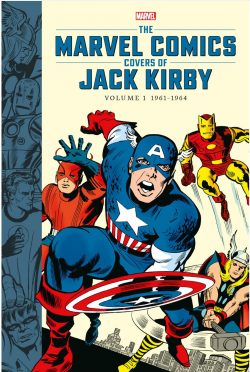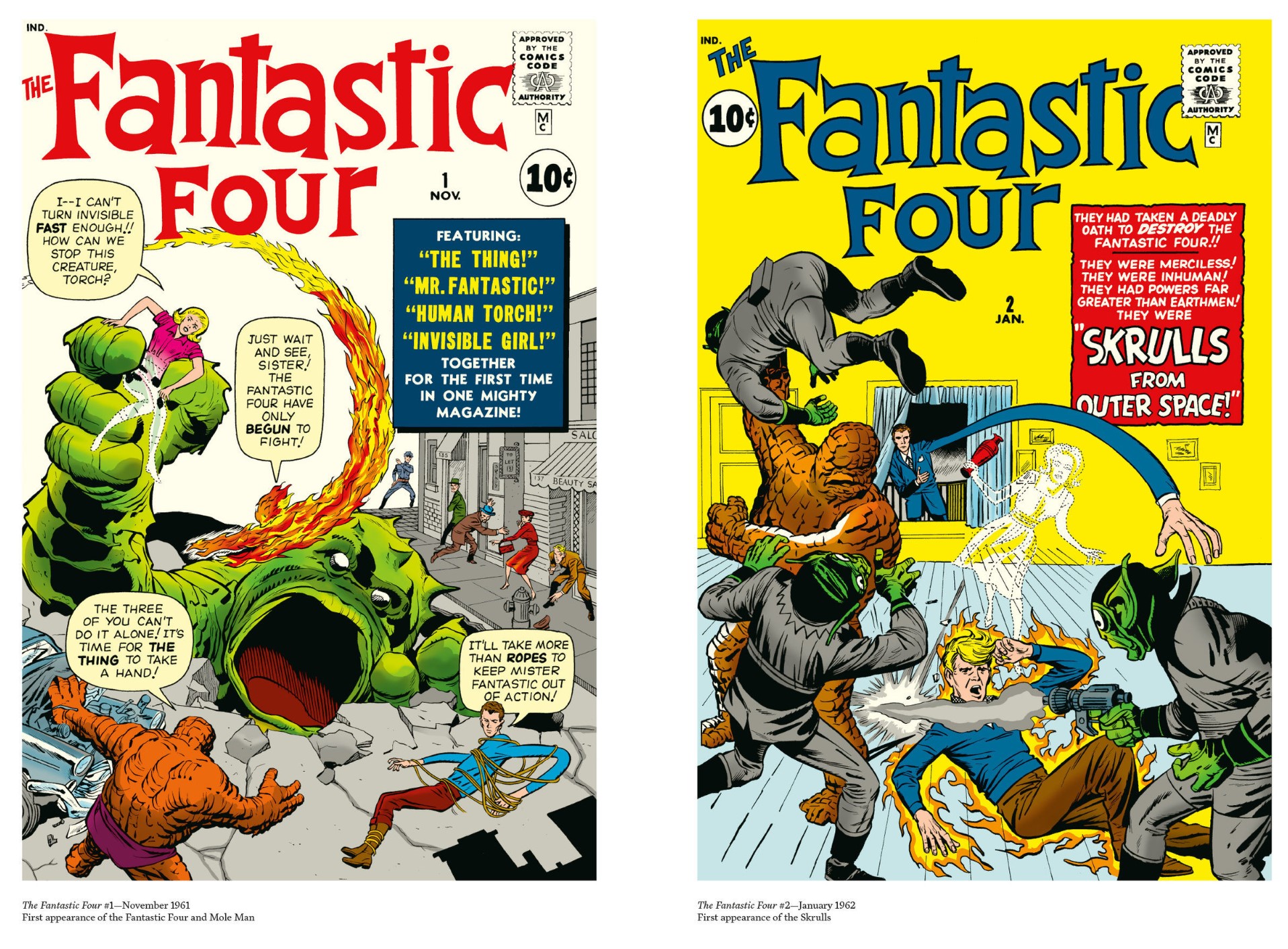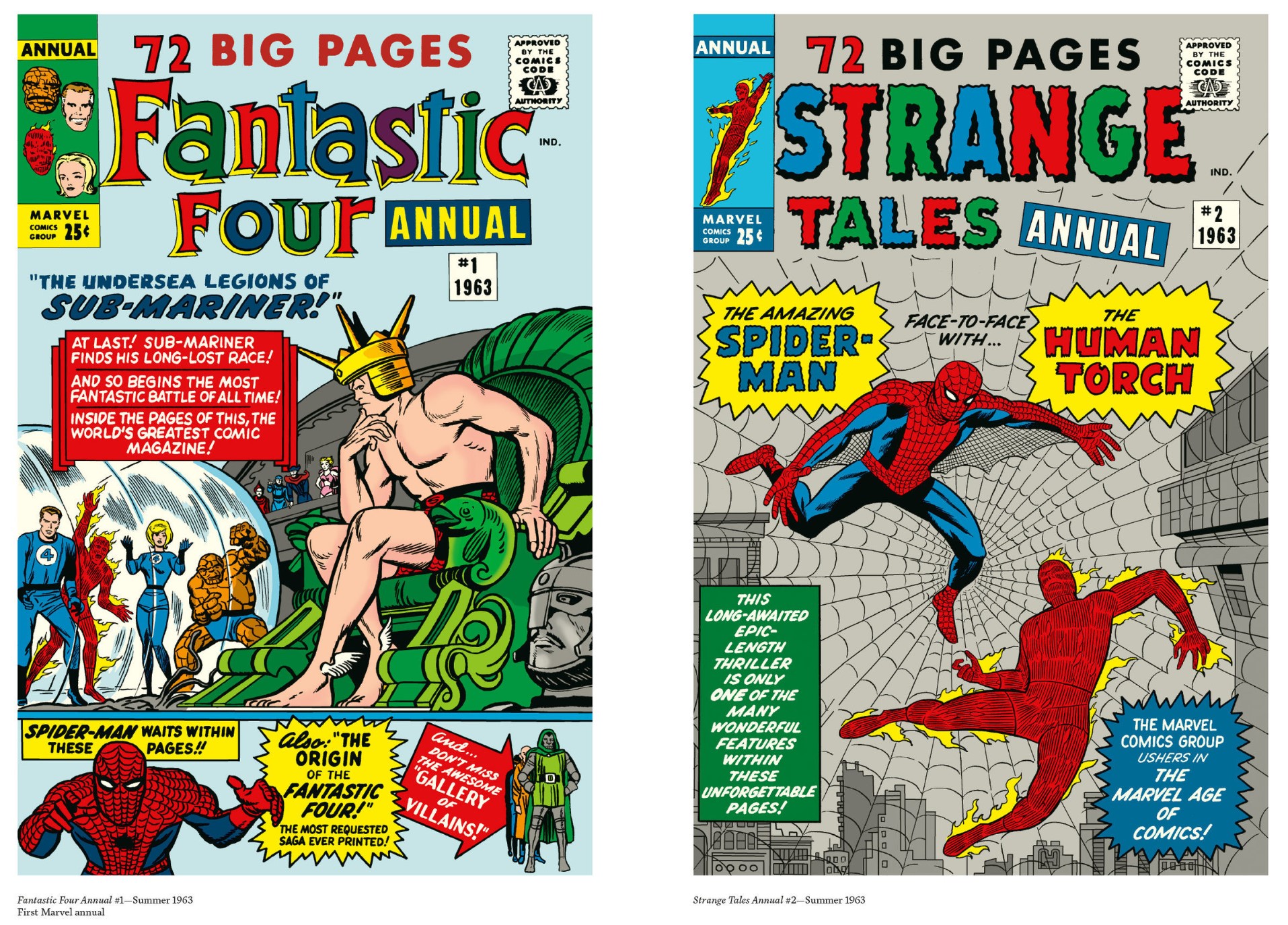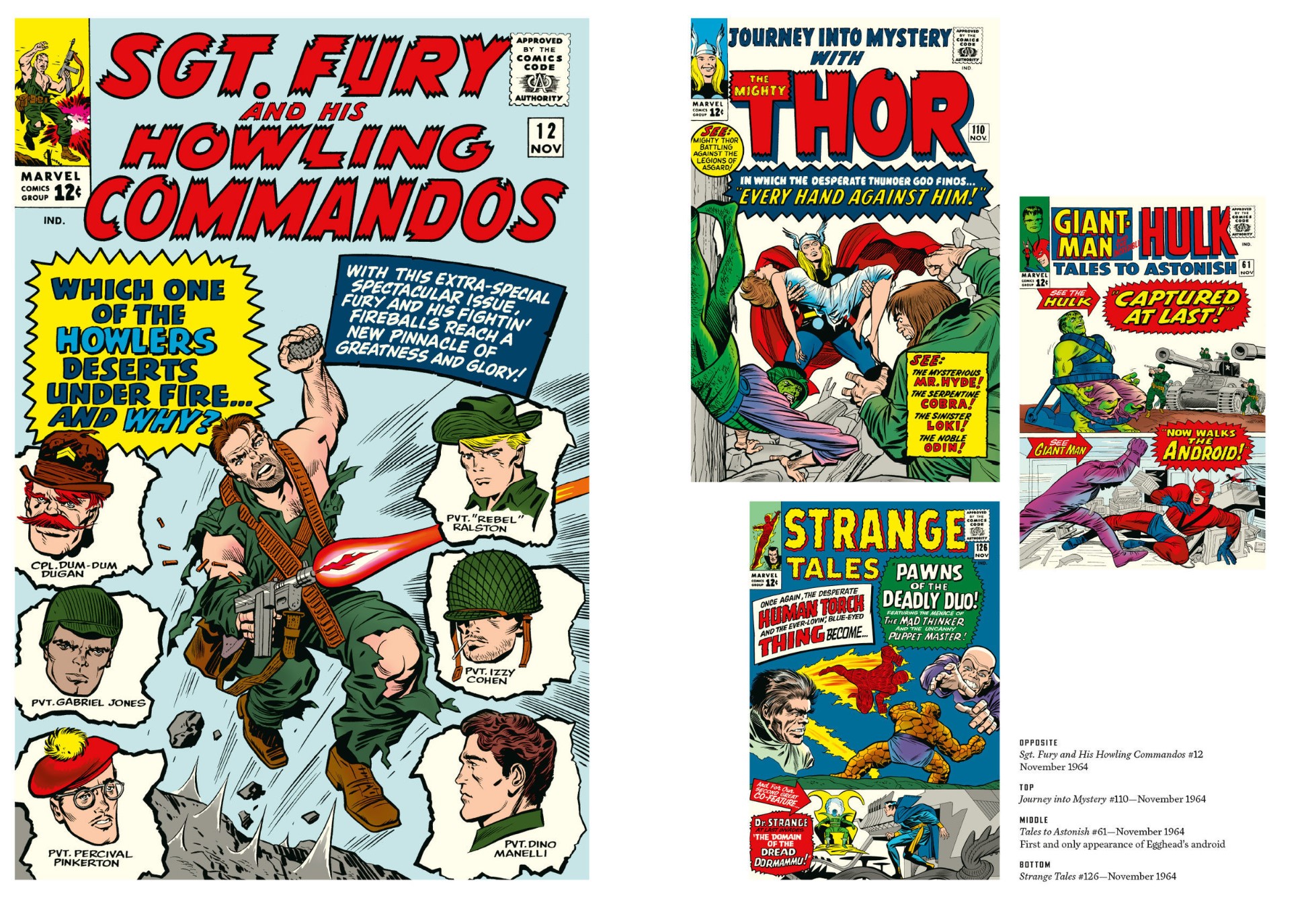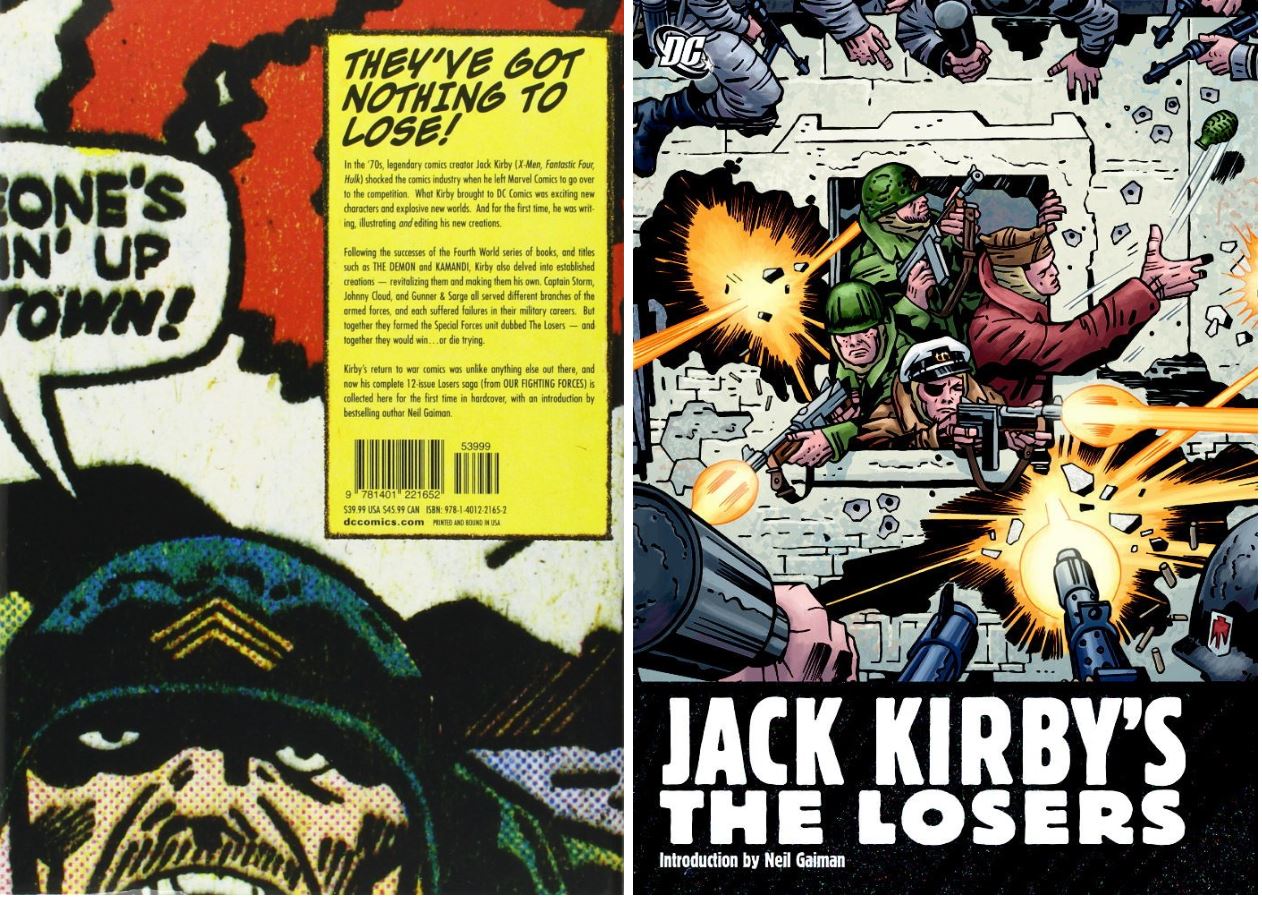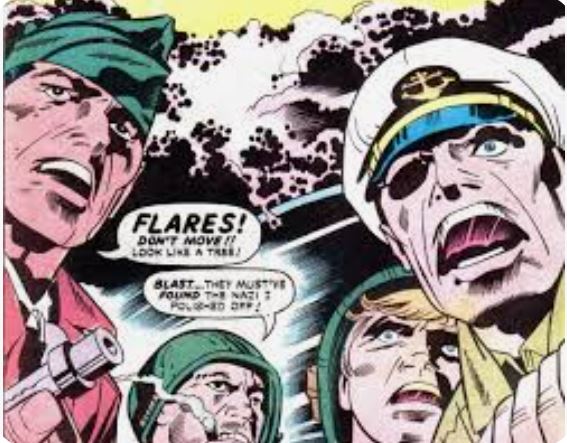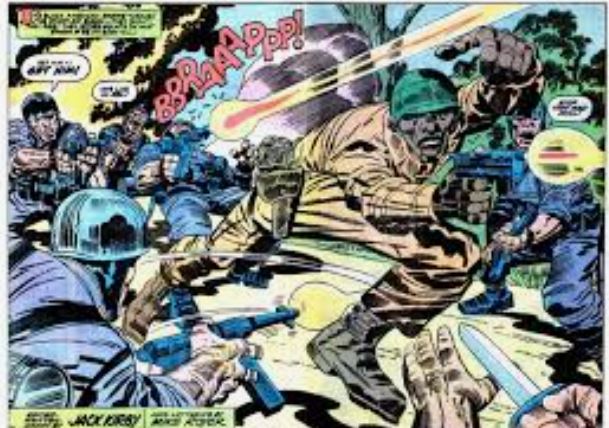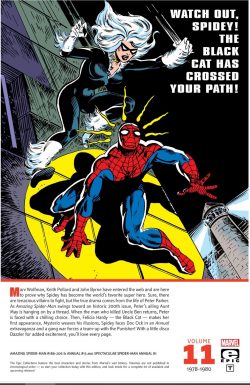
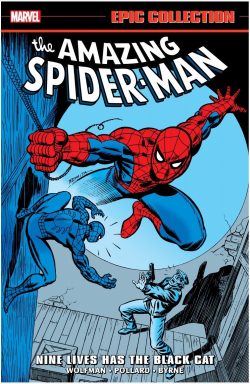
By Marv Wolfman, Bill Mantlo, Roger Stern, David Michelinie, Jim Starlin, Keith Pollard, John Byrne, Rich Buckler, Sal Buscema, Al Milgrom, Jim Mooney, Mike Esposito, Frank Giacoia, Terry Austin, Gene Day, Pablo Marcos, Bob McLeod, Frank Springer, Marie Severin, Alan Kupperberg & various (MARVEL)
ISBN: 978-1-3029-5641-7 (TPB/Digital edition)
Win’s Christmas Gift Recommendation: Spectacular Seasonal Spider Sensationalism … 8/10
This book includes Discriminatory Content produced in less enlightened times.
Peter Parker was a smart yet alienated kid when he was bitten by a radioactive spider during a school science trip. Developing astonishing arachnid abilities – which he augmented with his own natural chemistry, physics and engineering genius – the boy did what any lonely, geeky nerd would do with such newfound prowess: he tried to cash in for girls, fame and money.
Making a costume to hide his identity in case he made a fool of himself, Parker became a minor media celebrity – and a criminally self-important one. To his eternal regret, when a thief fled past him one night, the cocky teen didn’t lift a finger to stop him. When Parker returned home he learned that his beloved guardian uncle Ben Parker had been murdered.
Crazed with a need for vengeance, Peter hunted the assailant who had made his beloved Aunt May a widow and killed the only father he had ever known, finding, to his horror, that it was the self-same felon he had neglected to stop. His irresponsibility had resulted in the death of the man who raised him, and the traumatised boy swore to forevermore use his powers to help others…
Since that night he has tirelessly battled miscreants, monsters and madmen, with a fickle, ungrateful public usually baying for his blood even as he perpetually saves them, and by the time of the tales in this full-colour compendium of web-spinning adventures the wondrous wallcrawler was a global figure and prime contender for the title of the World’s Most Misunderstood Hero. Spanning November 1978 to July 1980, chronologically re-presenting Amazing Spider-Man #186-206, Annual #13 & Spectacular Spider-Man Annual #1 the transformative tales are an attempt to reconcile the tragic, ill-fated young man with the changing world of the fast-approaching, take-no-prisoners 1980s; and regrettably they don’t always succeed in our hindsight-equipped 21st century eyes…
Previously: old girlfriend and current neurotic stranger Betty Brant-Leeds returned after fleeing a dying marriage. She was absorbed with nostalgic notions to rekindle old flames with first love Peter Parker, but that mature-&-moved-on, almost-college-graduate’s social life was already deeply out of control. For his arachnid alter ego life involved constant attacks especially from increasing out-of-whack J. Jonah Jameson who funds yet another fringe science secret scheme to trap Spider-Man…
At this time a star of (1970s) television, the webslinger’s adventures were downplaying traditional fantasy elements as Keith Pollard became penciller for #186. Now, ‘Chaos is… the Chameleon!’ sees the devious disguise artist seeking to discredit the webslinger, even as District Attorney Blake Tower works to dismiss all charges against him, and is followed by a moody tale of lockdowns and plague as Spider-Man and Captain America unite to stop a voltaic villain inadvertently using ‘The Power of Electro!’ (Marv Wolfman, Jim Starlin & Bob McLeod) to trigger a biological time bomb…
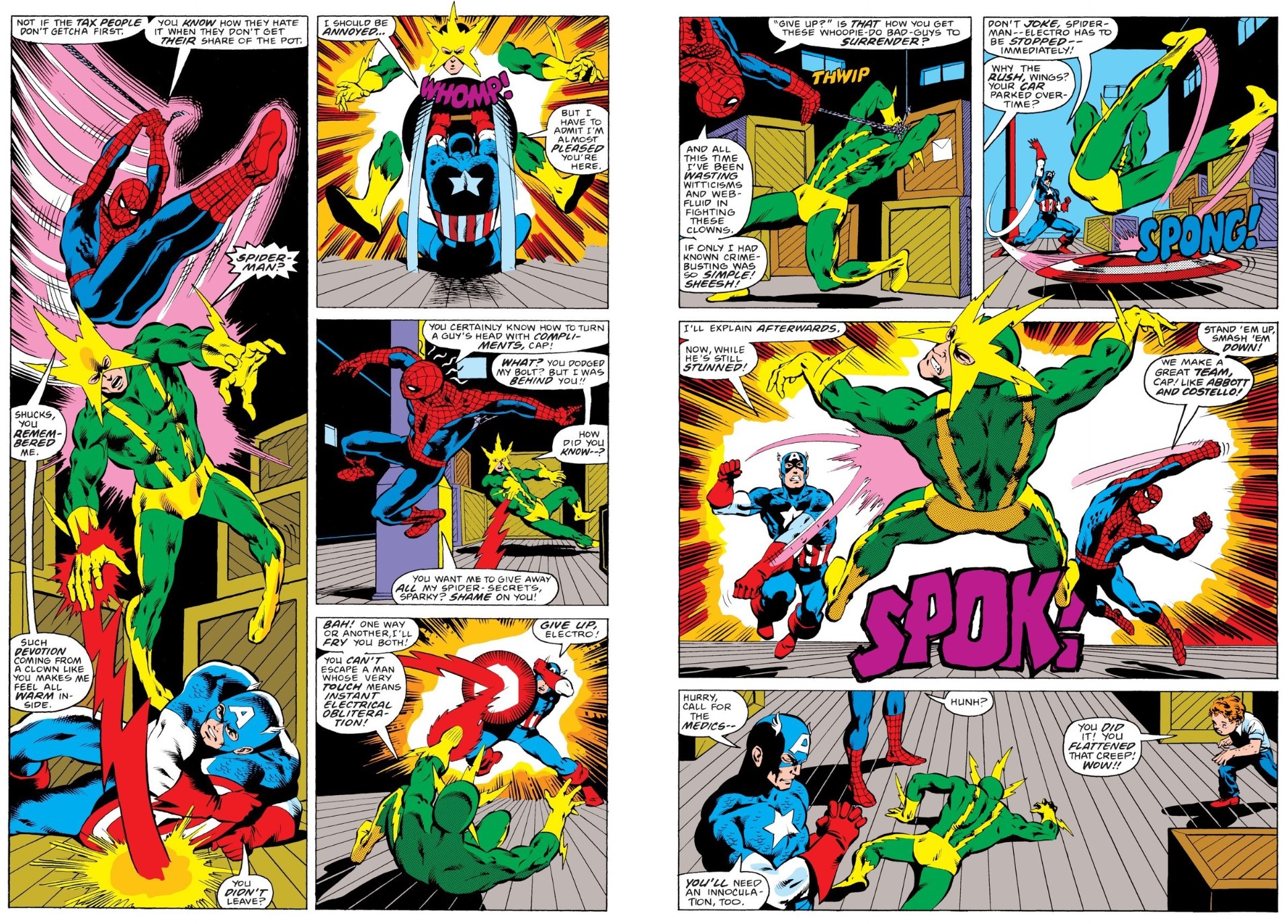
Ruthlessly violent thugs are on the rampage next as ASM #188 depicts ‘The Jigsaw is Up!’ (illustrated by Pollard & Mike Esposito) after the river party cruise Peter, his pals and increasingly insistent Betty are enjoying is hijacked. Jameson’s secret then gets out to inflict ‘Mayhem by Moonlight!’ in a sharp two-part shocker limned by John Byrne & Jim Mooney. Exploited by malign and dying science rogue Spencer Smythe, Jonah is abducted by his own monster-marked son John leaving the wallcrawler ‘In Search of the Man-Wolf!’ Forced to witness the (presumed) death of his child at his worst enemy’s hands leads to a savage confrontation with Smythe’s Spider-Slayer robots in ‘Wanted for Murder: Spider-Man!’ (#191 by Pollard & Esposito) before all Jonah’s debts are paid and another death results after Spidey & Jonah are bound to the same bomb and given ‘24 hours Till Doomsday!’ …
Eluding doom by the skin of their shackled wrists, a new phase in the Jonah’s psychotic enmity begins in ASM #193’s ‘The Wings of the Fearsome Fly!’ with Wolfman, penciller Keith Pollard and inker Jim Mooney recapping how would-be Spider-Slayer Spencer Smythe had handcuffed JJJ to his despised bête noir Spider-Man in an explosive deathtrap and how that drew mutual old enemy The Fly as well as causing the death of John Jameson in his monster form of the ferociously feral Man-Wolf…
Peter is most disturbed by a half-remembered moment. In that clash Jonah might have peeked under the arachnid’s mask whilst the wallcrawler was briefly unconscious, and not knowing is driving Parker crazy. The loss of his son has absolutely unhinged the publisher, however, and, after firing Peter, Jonah swears to destroy Spider-Man, even as Peter dutifully hunts down the Fly. He finally finds him robbing the Metropolitan Museum of Art and succumbs to an opportunity to release his pent-up anger. It ends badly…
In the aftermath, another plot strand resurfaces as Ned Leeds show up and punches Parker out. The incensed reporter thinks its justifiable as his (recently estranged) wife Betty has been nostalgically and aggressively pursuing old flame Peter. Meanwhile at May Parker’s empty house, a strangely familiar figure is tearing walls down hunting for something. After eventually giving up, he moves on to the Restwell Nursing Home where the widow Parker currently resides… and finds a situation he can readily exploit…
With life in turmoil Peter is poorly prepared for the major change that begins in #194, painfully learning ‘Never Let the Black Cat Cross Your Path!’ after encountering a svelte femme fatale costumed jewel thief with luck always on her side. However, she seems to have forsaken profit for a new, darker agenda. Inked by Frank Giacoia, the tale sees her recruit a crew to break someone out of jail, and – despite an obvious (and mutual) attraction to sexy Spidey – she will let nothing stop her…
Now working as a photographer for rival paper the Daily Globe where he immediately sparks the curiosity of reporter April Maye, Peter continues to pursue the feline felon in a chase to disaster, quickly realising ‘Nine Lives Has the Black Cat!’ (collectively inked by “M. Hands” Mooney, Mike Esposito & Al Milgrom). This affords an origin for the curvaceous crook and culminates in shocking news for Peter…
I’d normally give lip service here to “spoilers” and indeed back then, the death of Aunt May was – for a brief moment – a big deal, but it wasn’t real and didn’t last long. In-world though, Peter is crushed by the loss of his last relative and only family, with ‘Requiem!’ – limned by Milgrom, Mooney & Frank Giacoia – seeing him shattered by her “peaceful passing” whilst he was elsewhere, and at this moment still blithely unaware of a plot by unctuous home director Dr. Rinehart. Many older fans had already clocked who he really was…
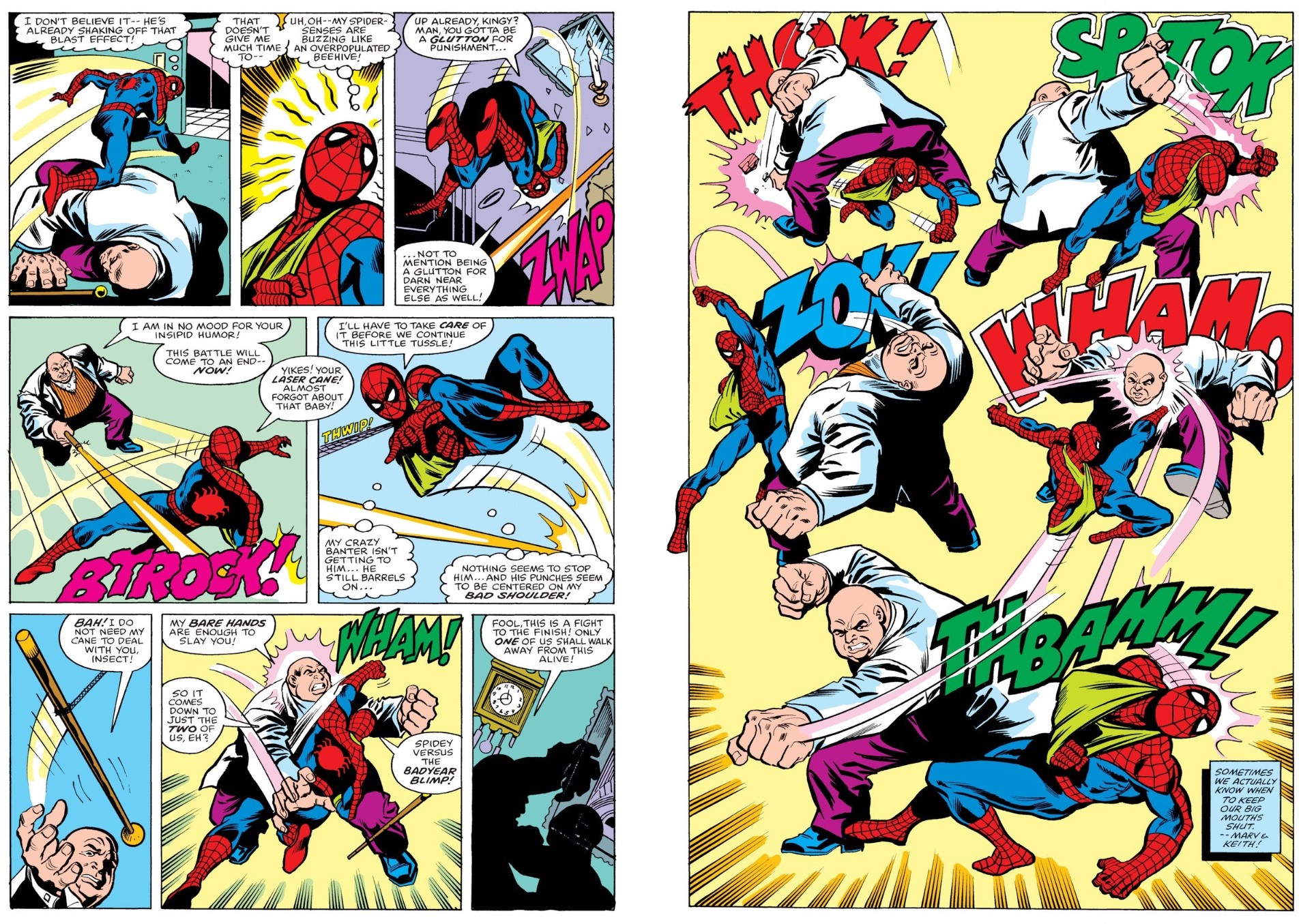
Dazed and reeling, the hero is just starting to suspect something isn’t right as he’s ambushed by thugs and dragged to ‘The Kingpin’s Midnight Massacre!’ in ASM #197. Here Wolfman, Pollard & Mooney show the soon-to-be-retired crime lord packing to leave and up against an immovable deadline. To please his beloved wife Vanessa, the villain will cease his illegal activities at the witching hour. All that’s left on his to-do list is to kill Spider-Man, but the clock’s ticking and the wallcrawler just won’t die…
Building up to the anniversary spectacular and illustrated by Sal Buscema & Mooney, most dangling plot threads start cleaving together when Peter realises who Rinehart actually is and bursts into the Restwell Home in ‘Mysterio is Deadlier by the Dozen!’ to find the master of illusion preying on sundowning oldsters and teamed up with the burglar who shot Uncle Ben. Out of jail and desperate to retrieve something long hidden in the Parker house, the long-discarded thug has hijacked Mysterio’s comfortably risk-free scam and attracted the wrath of a really, really angry Spider-Man…
Despite fighting back fiercely in ‘Now You See Me! Now You Die!’ the writing is truly on the wall for the now-at-odds bad guys who meet their fates in The Amazing Spider-Man #200’s extra-length conclusion ‘The Spider and the Burglar… A Sequel!’ – cover dated January 1980 and courtesy of Wolfman, Pollard & Mooney.
With the truth out and May restored, Peter is ready for whatever the future holds as we segue into The Amazing Spider-Man Annual #13 where Wolfman, Byrne & Terry Austin occupy ‘The Arms of Doctor Octopus’ with a murderous scheme to regain his underworld reputation and dominance. The plot is brought to Spider-Man’s attention by murdered federal agent Kent Blake, who blackmails the hero into going undercover in the gang to recover stolen plans and ends with a catastrophic clash that sees the villain maimed…
Although momentarily defeated, Ock isn’t finished with New York or Spider-Man, and the saga continues and concludes in the first annual of a companion Spider-title. Before that, though, Annual traditions are upheld by additions to ongoing feature ‘A Gallery of Spider-Man’s Most Famous Foes’. Rendered by Pollard, the roster expands for The Molten Man, The Looter, The Rhino, The Shocker, The Kingpin, Silverman and Man-Mountain Marko, The Prowler and The Kangaroo before ending on ‘A Mighty Marvel Bonus’ offering updated locations and floorplans for ‘Peter Parker’s Pad!’, The Daily Bugle & Daily Globe offices and Empire State University Campus – and Peter’s colleagues.
The Spectacular Spider-Man Annual #1 details the denouement in ‘And Men Shall Call Him… Octopus!’ as Bill Mantlo, Rich Buckler & Mooney follow a furious and confused webslinger who uses Ock’s severed metal tentacle to lure the near-insane-with-pain-&-shock villain into a cataclysmic showdown aboard a ship’s graveyard in the East River and apparently final clash in an undersea base…
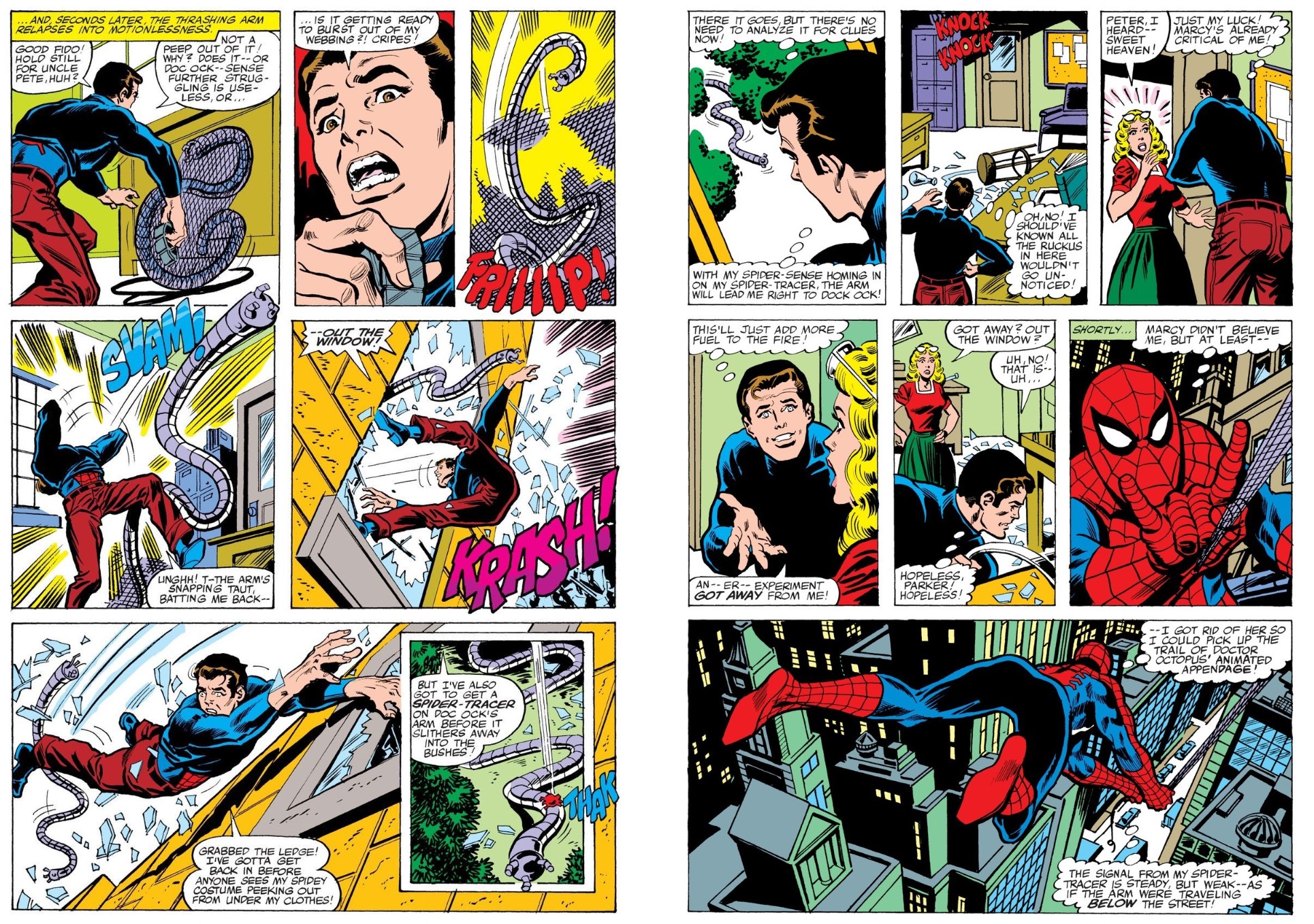
Dried out and back to business basics, the hero’s journey resumes in ASM 201’s ‘Man-Hunt!’ as Wolfman, Pollard & Mooney reunite the hero with The Punisher, whose hunt for a gang boss turns up a suspicious connection between photo seller Parker and his star subject Spider-Man…
Further muddying the waters is the latest woe to befall Jonah, whose nervous collapse devolves into pure mania, prompting his escape into delusion and the city’s back alleys. Guilt-ridden Parker can’t do much for his favourite gadfly, but can send Frank Castle on an identity-saving wild goose chase, before helping to deal with his latest target in concluding chapter ‘One For Those Long Gone!’
More infomercial than adventure – and probably a deadline-busting fill-in – Amazing Spider-Man #203 is one huge plug for Marvel’s disco sensation as Wolfman, Pollard, Esposito & Friends introduce Spider-Man to mutant musician Dazzler. The siren songstress is being hunted by old arachnid foe Lightmaster who needs her energies to bust him free of the light dimension that holds him captive but fails again in ‘Bewitched, Bothered and B-Dazzled!’
Another strong independent woman (re)appears in Pablo Marcos inked #204, as Wolfman signs off with ‘The Black Cat Always Lands on her Feet!’ Here the presumed-dead super thief returns to steal a selection of romance-themed art, and Spidey’s pursuit is the bandit’s actual goal. As seen in #205’s David Michelinie, Pollard & Mooney conclusion ‘…In Love and War!’, second generation purloiner Felicia Hardy has become fixated on the enigmatic masked man and stealing these items is her way of wooing the wallcrawler. Just for a change, this is a challenge requiring Parker’s mind and empathy, not Spider-Man’s might…
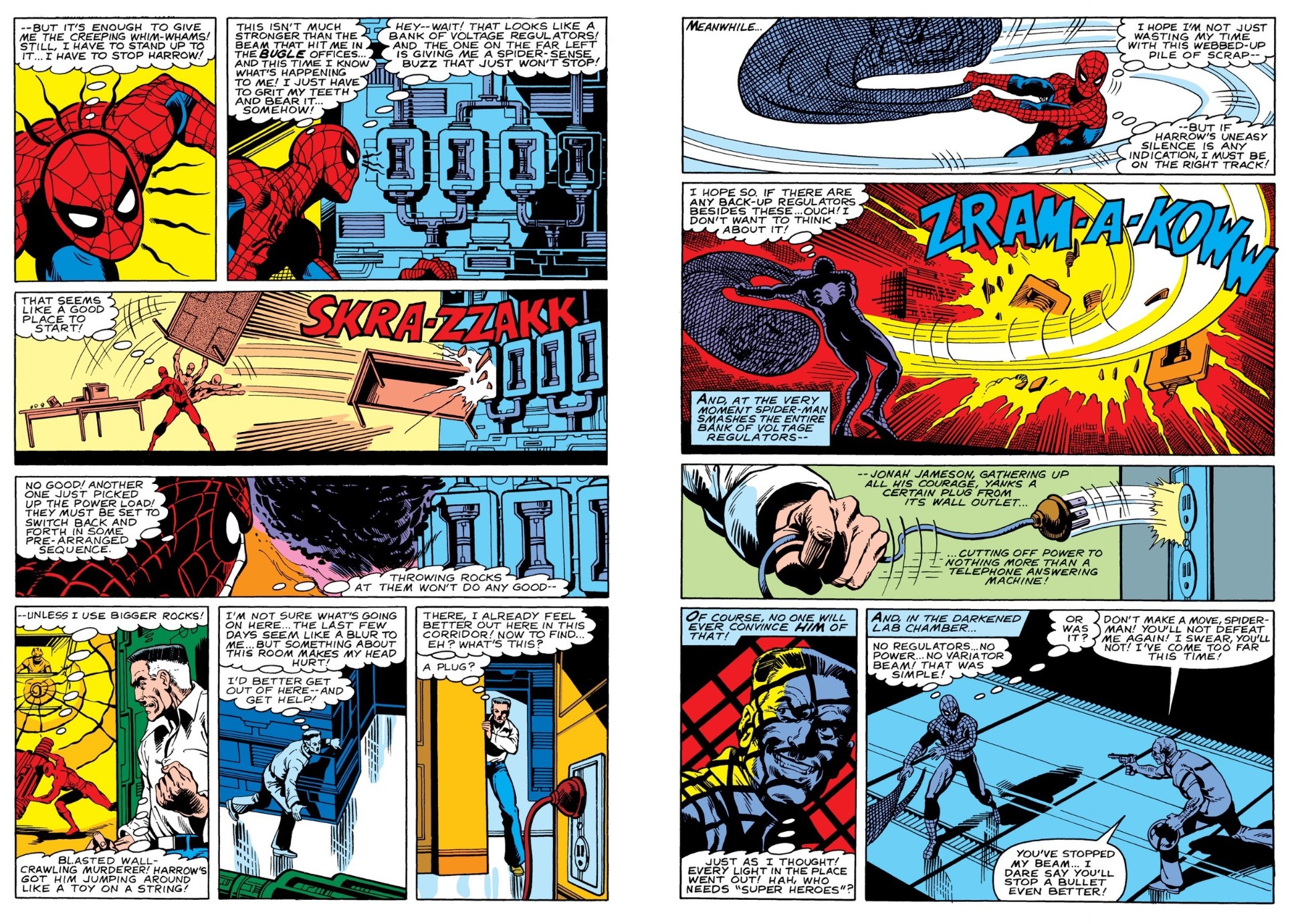
With an increasingly angry and unstable Joe Robertson replacing a lost amnesiac Jameson at the Daily Bugle, ASM #206 sees Roger Stern, John Byrne & Gene Day resolve the saga of his breakdown in closing inclusion ‘A Method in his Madness!’ Here it’s revealed that rogue scientist Dr. Jonas Harrow (who remade sundry second-rate thugs into super-foes like Will-O’the-Wisp, Kangaroo and Hammerhead) had turned the publisher’s office into a testing ground for his fringe science. Now that his Mental Attitude-Response Variator ray has driven Jonah to the edge of madness, Harrow plans to turn it on Spider-Man himself, but one last test on the entire Bugle staff gives our hero a heads-up and leads to the devil doctor’s defeat…
With covers throughout from Milgrom, Pollard, John Romita Sr., Buckler, McLeod & Josef Rubinstein, this tome also offers a selection of original art by Pollard with Mooney, Frank Giacoia and Byrne & Austin; Carmine Infantino & Steve Leialoha’s unused cover to Spider-Woman #9 where Wolfman originally intended Black Cat to debut, and Dave Cockrum’s revamped design for her as well as an unused Pollard & McLeod cover for ASM #194 and Cockrum’s rough for the cover they finally used. Completing the extras are House ads for forthcoming landmark ASM #200.
These yarns confirmed Spider-Man’s growth into a global multi-media brand. Blending cultural veracity with superb art, and making a dramatic virtue of the awkwardness, confusion and imputed powerlessness most of the readership experienced daily, resulted in an irresistibly intoxicating read, especially when delivered in addictive soap-styled instalments, but none of that would be relevant if Spider-Man’s stories weren’t so utterly entertaining. This action-packed collection relives many momentous and crucial periods in the wallcrawler’s astounding life and is one all Fights ‘n’ Tights fanatics must see…
© 2025 MARVEL.

